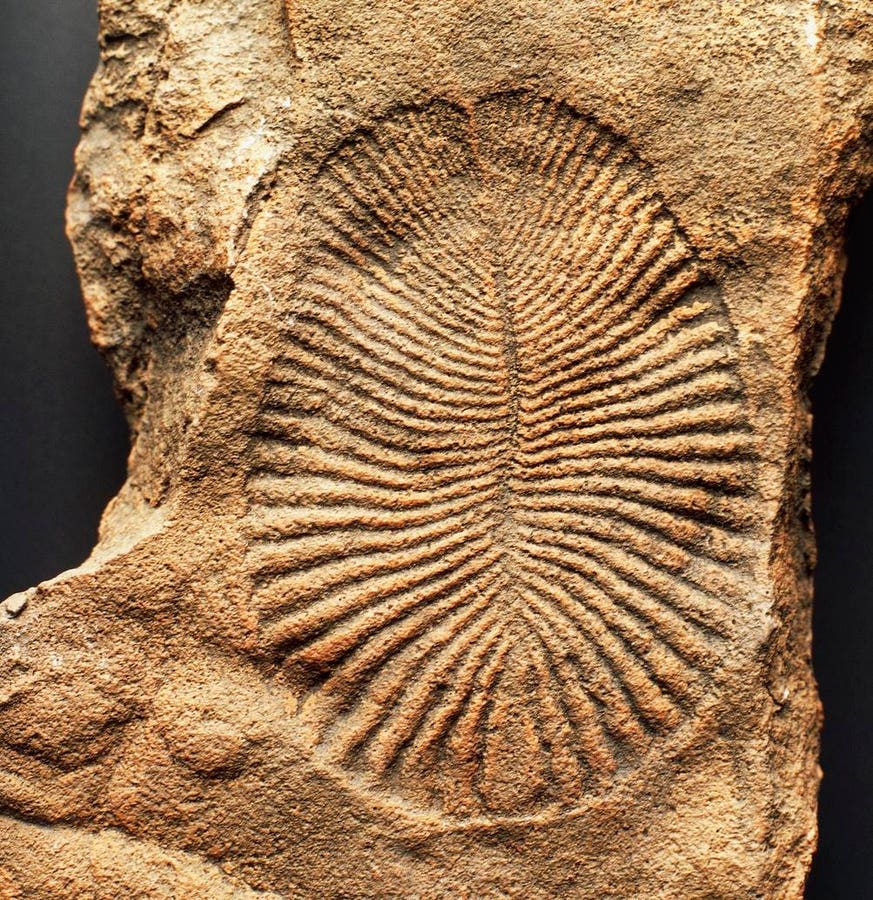Dickinsonia costata fossil, Ediacaran biota, Precambrian Period.
De Agostini via Getty Images
In a new study, Christopher Mulligan, a Ph.D. student at the Department of Earth and Planetary Sciences, University of California, reexamined chemical traces in Dickinsonia, one of the earliest known multicellular organism on Earth. Its fossils contain unusually high levels of coprostane-like molecules, a chemical compound linked to modern animals.
In 1947, geologist Reginald C. Sprigg announced the discovery of fossils of possible animal-like creatures from the Ediacara Hills in Australia. Preliminary dating of the rock formations revealed that the Ediacara Fauna was living more than 500 million years ago in a shallow sea.
Dickinsonia is one of the most enigmatic critters of the Ediacara Fauna, resembling a sort of hybrid between a worm and a jellyfish. Scientists have long debated if it was an animal at all, with some even suggesting a lichen affinity.
Since its discovery, chemical tests have shown many molecules linked to modern animals, including steroids and coprostanol, preserved in Dickinsonia fossils. To test where this compound came from, Mulligan analyzed 115 animal genomes to look for evidence when coprostane-producing enzymes first evolved. The results showed no evidence of coprostanol production in invertebrates, suggesting Dickinsonia’s coprostane wasn’t produced by the organism itself.
While the study cannot rule out the possibility of contamination, Mulligan proposes an alternative hypothesis to explain
Coprostane-like molecules can derive from the decay of other organic compounds. The seafloor of the Ediacaran sea — as suggested by fossil evidence — was covered by a dense microbial mat. The microorganisms living in the microbial mat feed on decaying organic material. Among their waste products were coprostane-like molecules. Dichinsonia, feeding on the microbial mat, accumulated and preserved these molecules in its soft tissue. Still today, bacteria living in vertebrate guts form coprostanol by metabolizing cholesterol, and coprostanol is typically released into the environment as waste product (curiously enough, human feces are especially enriched in coprostanol).
Dickinsonia apparently possesses no visible mouth or digestion system, and scientists were unsure how the living organism sustained itself. Some argued that the lack of any feeding mechanism was the result of poor preservation in the coarse-grained sandstone where Dickinsonia fossils are found. Others imagined Dickinsonia slowly crawling around the seafloor, then resting on selected spots and absorbing nutrients directly through its soft body surface. The new study seems to support this feeding strategy, offering a rare insight into how some of Earth’s first animals lived and ate.
The full study, “A Reassessment of the Coprostane Biomarker in the Ediacaran With Implications for Dickinsonia,” was published in the journal Geobiology and can be found online here.
Additional material and interviews provided by California University.


